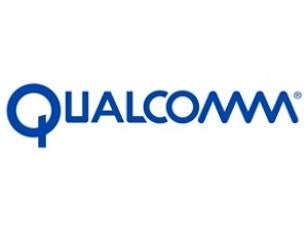
The Qualcomm story
Growth in the mobile space is largely uneven, and depending on the geography low-end devices are in greater demand than the high-end. The management team at QUALCOMM, Inc. (NASDAQ:QCOM) believes that smartphone users in emerging market economies will eventually transition to high-end devices.
The company reported that revenues were up by 35% year-over-year. The rise in revenue primarily came from the company’s CDMA (mobile hardware) division (47% year-over-year growth). The QUALCOMM, Inc. (NASDAQ:QCOM) technology license division was up by 17%. The neat side of the story is that the company’s hardware business, which represents the company’s net revenue, was up the most. The licensing division, which has higher gross margins, was also up significantly year-over-year.
QUALCOMM, Inc. (NASDAQ:QCOM)‘s 35% year-over-year revenue growth was offset by a 40.75% increase in total operating costs. The increase in operating costs was expected as the company shifted its strategy to lower margin system-on-chips for emerging market devices. The company was able to report a 21% year-over-year improvement in earnings per share (Non-GAAP).
The company reported $1.03 in earnings per share (Non-GAAP) for the most recent quarter. This met analyst expectation that were set at $1.03 in earnings per share (Non-GAAP). So while the company didn’t surprise, it certainly didn’t disappoint (that’s all we’re asking for at this point).
Outlook
I think the rosiest aspect is that the company provided guidance that showed rising average selling prices. The CEO, Paul Jacobs stated that the future possibilities in mobility are near endless (HD audio, proximity based communication, wireless charging, ultra-HD video, and so on). So basically the high-end isn’t tapped for innovation quite yet as there are a lot of cool features that can be added to smartphones we just don’t know about yet.
The company provided guidance that revenues should be able to grow by 27% to 31% in 2013. The company’s Non-GAAP diluted earnings per share to grow by 19% to 23% in 2013. The full-year guidance indicates that phones in general will be able to sustain high rates of growth.
Information pertinent to smart phones

The company reports that device average selling price is going to increase from $219 in 2012 to $229 (high end) in 2013. The average selling price is expected to go up because discretionary income should increase in places like China, India, and Russia. This will shift lower-end consumers to higher-end devices.
The rising average selling prices also indicate that both Apple Inc. (NASDAQ:AAPL) and Samsung may have further growth potential in the high-end. The growth will become heavily dependent on socioeconomic factors.
Shipment figures for QUALCOMM, Inc. (NASDAQ:QCOM) are estimated to improve by around 15.8% on the high-end. With 1.085 billion device sales estimated for the 2013 calendar year. Assuming QUALCOMM, Inc. (NASDAQ:QCOM)’s shipments for devices reach the targeted amount, and pent-up demand kicks in for the next generation Apple iPad and iPhone devices, third quarter results could be phenomenal for Apple Inc. (NASDAQ:AAPL).
Apple will be able to sustain earnings growth if it offers a lower-end device and signs a contract with China Mobile Ltd. (ADR) (NYSE:CHL). 2013 seems to have been a transition year for Apple Inc. (NASDAQ:AAPL). In 2014, assuming average-selling-prices trend higher, with shipments up year-over-year, the company could beat expectations.
Samsung and Apple trading strategy
Earlier in the year investors punished Samsung for missing guidance, and generating year-over-year deceleration in earnings growth.

Source: Statista
The fact is 46% year-over-year growth probably isn’t that sustainable as Samsung has been able to launch products in the low, mid, and high-end. There’s no pent-up growth opportunity as the company is expected to follow trends in the sector. If that is the case, then it is practical to assume that Samsung’s earnings growth should eventually be in the mid-teens.
Gartner currently estimates that the smartphone market will grow to 1.7 billion shipments in 2017. If that’s the case, then investors will have to lower expectations going forward. Mid-teen growth certainly isn’t bad, especially when considering the 2013 estimated price-to-earnings ratio (forward) is going to be 6.38. Assuming 20% compounded smart phone growth (Gartner estimates) – perhaps Samsung could be trading at a bit of a discount relative to the four-year growth assumption.
Sure there is a lot of room for error, and many criticize long-run forecasts. But the way I see it, planning your five-year exit into the future based on a four-year forecast sounds pretty appropriate for long-term growth investors. This is why I don’t see the potential in either Apple or Samsung to be “trading vehicles.” You can’t trade these stocks because they’re going to tank on missed quarters, and will rally on surprise quarters. The aggregate (macro) picture looks good, what’s subject to error is execution on the part of the management (this will cause stocks in the space to remain volatile, as a result).
Chances are if the long-term trend in demand upholds and innovation continues, then it’s better to accumulate Apple and Samsung stock than it is to trade in and out of them.
Conclusion
Qualcomm seems to be executing, and its outlook is what keeps me optimistic on the industry. The macro picture remains strong, which is heavily indicative for upstream suppliers like QUALCOMM, Inc. (NASDAQ:QCOM). Further downstream, the OEMs (other equipment manufacturers) are less predictable. Because of this, Qualcomm is less of a risk when compared to Apple and Samsung.
But on the upside Apple and Samsung are cheap so long as the management teams are effectively able to execute on long-term growth strategies that can reflect the potential in smartphone and tablet devices.
The article Qualcomm Saves the Technology Rally originally appeared on Fool.com and is written by Alexander Cho.
Alexander Cho has no position in any stocks mentioned. The Motley Fool recommends Apple. The Motley Fool owns shares of Apple and Qualcomm. Alexander is a member of The Motley Fool Blog Network — entries represent the personal opinion of the blogger and are not formally edited.
Copyright © 1995 – 2013 The Motley Fool, LLC. All rights reserved. The Motley Fool has a disclosure policy.





